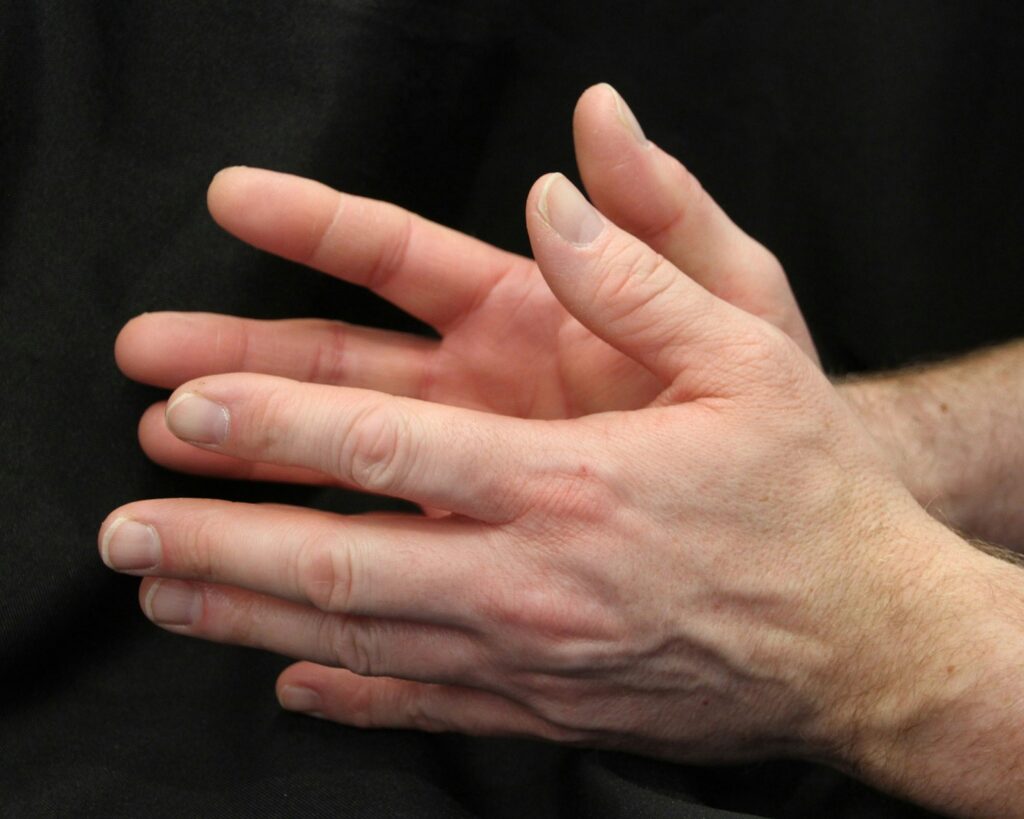Parkinson’s disease is a progressive neurological disorder that affects movement, coordination, and overall quality of life. While it often develops slowly, its early signs can be subtle and easily mistaken for normal aging or stress. Recognizing the symptoms at an early stage can make a significant difference in managing the disease, as early treatment and lifestyle changes can help improve outcomes. Here are eight early signs of Parkinson’s disease that should not be ignored, each offering important clues for early detection and medical evaluation.
1. Persistent Tremors or Shaking

One of the most common and noticeable early signs of Parkinson’s disease is a tremor, often beginning in the hands, fingers, or even the chin. These tremors may occur when the muscles are at rest and can be subtle at first, appearing as a slight shaking of one hand or a repetitive movement of the thumb. While not all tremors indicate Parkinson’s, when they persist without an obvious cause, such as fatigue or medication side effects, it’s important to seek medical advice. Early detection can allow doctors to recommend lifestyle changes and monitor symptoms before they progress further.
2. Slowed Movements (Bradykinesia)

Another key early symptom is bradykinesia, or a noticeable slowing down of movements. People may find that simple tasks like buttoning a shirt, writing, or walking take longer than before. Everyday activities that once felt effortless may suddenly require more concentration and effort. This slowing is not just about aging; it happens because the brain struggles to send the right signals to the body. If stiffness or reduced agility is becoming more noticeable, especially when combined with other signs, it could be an early indicator of Parkinson’s disease that should not be overlooked.
3. Changes in Handwriting

Parkinson’s disease often affects fine motor control, and one of the earliest signs can appear in handwriting. A condition known as micrographia causes handwriting to become smaller and more cramped, often with letters crowding together. A person may also notice that their writing gets progressively smaller as they continue to write. While writing changes can sometimes be linked to age or arthritis, a sudden shift in handwriting style should not be ignored, especially if paired with other symptoms. This subtle change is one of the early signals neurologists look for during evaluation.
4. Stiffness and Rigid Muscles

Muscle stiffness or rigidity is another common early sign that people often dismiss as ordinary aches or arthritis. Unlike typical stiffness from exercise or strain, rigidity associated with Parkinson’s doesn’t go away easily and may affect movement in specific areas, such as the neck, shoulders, or legs. Some people may also notice that their arms stop swinging naturally when they walk. This rigidity not only causes discomfort but also reduces the range of motion. Paying attention to stiffness that doesn’t improve with rest or stretching can be critical for early diagnosis and treatment.
5. Sleep Disturbances and Sudden Movements

Unusual sleep patterns may also signal early Parkinson’s disease. People might experience vivid dreams, restless tossing, or sudden jerking movements during sleep. Sometimes, individuals act out their dreams physically, moving or even speaking in their sleep, which can disrupt rest. These disturbances are linked to changes in the brain’s regulation of movement and sleep cycles. Since sleep issues are common in many conditions, they can be easily dismissed, but when combined with other motor or behavioral changes, they may point toward Parkinson’s disease as an underlying cause.
6. Reduced Sense of Smell

A lesser-known but telling early sign of Parkinson’s disease is a reduced or lost sense of smell, also called hyposmia. People might find it difficult to detect certain scents, such as spices, flowers, or favorite foods. This symptom often appears years before motor issues become evident, making it an early but often overlooked indicator. While loss of smell can be linked to allergies, infections, or aging, a persistent and unexplained change may warrant further evaluation. Because it develops gradually, paying close attention to these sensory shifts is key to early awareness.
7. Changes in Facial Expression

Parkinson’s disease can affect the facial muscles, leading to a symptom often referred to as “masked face.” People may appear less expressive, with reduced blinking, smiling, or emotional response in their facial expressions. Friends and family often notice this change before the person experiencing it does. It may appear as if someone looks constantly serious or even depressed, despite feeling otherwise. Since facial masking is caused by muscle rigidity and reduced motor control, it serves as an important early sign of Parkinson’s that should not be overlooked in evaluations.
8. Soft or Slurred Speech

Changes in voice and speech can also emerge in the early stages of Parkinson’s disease. People may notice that their voice becomes softer, hoarser, or more monotone over time. Speech might also sound slurred or less clear, making communication more difficult. Often, the person may not realize these changes, while others around them notice the difference. Since voice changes can also be caused by colds, aging, or vocal strain, it’s important to consider them in context with other symptoms. Persistent changes in speech should always be discussed with a healthcare professional.
Comments